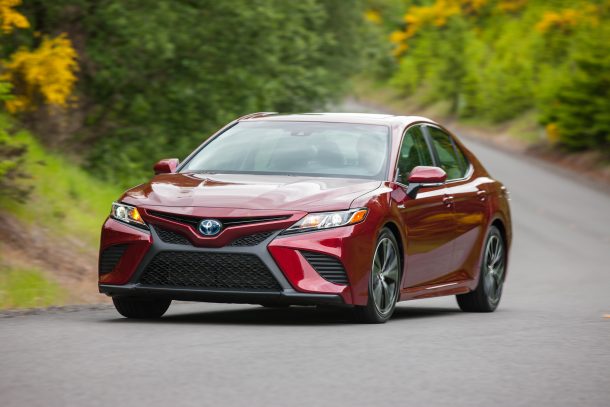Returning Lessees Should Be Prepared for a Price Shock

While U.S. new vehicle sales are expected to drop in 2019, average transaction prices and interest rates are climbing fast. That spells a potential bad day ahead for drivers reaching the end of their lease, Edmunds warns.
Those looking to get behind the wheel of a new sedan in the coming year might have to spend some quality time with a calculator.
The rise in popularity of leasing after the recession, coupled with a prolonged peak in U.S. sales that began around 2015, means 2019 will see a record number of lessees — 4.3 million — turning in their vehicles.
New features introduced during that time frame, especially safety tech, sent ATPs soaring. It’s an uneven surface, however. As crossovers and SUVs remain an automaker’s bread and butter, the declining passenger car market has many automakers rethinking their “bury it in incentives” strategy. We told you last week that pricing strategies are in flux, with many OEMs looking to squeeze extra profit from their remaining sedan sales.
That’s pushing window stickers in certain segments up at a faster clip than others. For a returning lessee looking to upgrade their three-year-old wheels, that reality, plus other factors, could mean a quick leap out of the segment.
“Demand for sedans has fallen off so sharply that they don’t hold their residual value like they used to, making lease payments much more expensive,” said Jessica Caldwell, executive director of industry analysis for Edmunds. “Couple that with the record-high vehicle prices and soaring interest rates, and car shoppers who may have only ever leased are now going to be facing some tough decisions.”
Edmunds points to four very popular models to tell the tale — two sedans and two crossovers. Comparing average lease cost (over a 36-month term) between a Honda Accord LX and a Honda CR-V LX AWD, analysts revealed a price gap of $1,746 for 2016 models, with the higher outlay going to the crossover fancier. In 2019 models, an average CR-V lease will set the consumer back just $37 more than the sedan.
There’s a similar gap between the Toyota Camry LE and the Toyota RAV4 LE AWD, with an average 2016 lease showing the crossover costing $2,318 more over the term. In 2019, it averages out to $1,313 more.
Edmunds points to well-stocked certified pre-owned lots as a potential draw for those returning customers.
Of the models with the largest increase in average lease cost between 2016 and 2019, the Camry SE takes the top spot among vehicles studied. A three-year lease on that sedan will cost the customer, on average, 26 percent more than before. A 2019 Corolla LE saw an average 22 percent increase in total lease cost, with the Accord LX rising 21 percent.
In contrast, mid-range AWD crossovers like the Ford Escape, Nissan Rogue, and Toyota RAV4 show an average increase of between 12 and 14 percent. (Of note: the 2019 Nissan Altima 2.5 S stands out as a relative leasing bargain among passenger cars. That sedan’s lease rose only 5 percent over the past five years.)
What to do? Prepare to change your plans as lease return time approaches, and do your homework. Edmunds suggests extending the lease for those who can, or kicking brand loyalty to the curb in the pursuit of conquest deals from rivals. It wouldn’t hurt to look up your current vehicle’s actual residual value, either. Any potential equity could be used to lower future lease payments on another vehicle.
[Image: Toyota]

More by Steph Willems
Latest Car Reviews
Read moreLatest Product Reviews
Read moreRecent Comments
- Bd2 Looking forward to flooding the rental lots with Hyundai and Kia models, this is just one obstacle now eliminated.
- Kcflyer keep the color. lose the stupid front design. make it reliable, at least as reliable as a base 911. Then and only then is it somewhat worthy of that price.
- FreedMike I'm not sure why anyone would choose this over an A8 or S-class.
- FreedMike I think the manufacturers who are discontinuing affordable small and midsize cars in favor of more expensive crossovers (that are built on the same platforms and use the same mechanicals as said small and midsize cars) may well live to rue that decision. Having said that, though, at least GM is offering decent entry level stuff beyond the Malibu, so good for them.
- Kjhkjlhkjhkljh kljhjkhjklhkjh The only one worth missing is in the EU making 350-ftbs of twist off a 2.0 diesel ..


































Comments
Join the conversation
My Camry lease is up at the end of August and I don't want to buy it out. Should be interesting times for buying or leasing.
So... in an increasing market of CUVs they're soaking buyers, in trucks they're drowning buyers, and now in a declining sedan market the move is soak those buyers too. But wait, despite four years of huge production coming off lease somehow all of those have soaked people too, because supply and demand, what's that? Did I wake up in Bizzaro world?